Aaron Marshall loves guitar. “I make a living every day playing the electric guitar. My identity is built around this thing. I’ve been my own boss since 2015,” he declared in a 2021 PG interview.
Aaron Marshall believes in guitar: “Anyone who thinks the death of the electric guitar is upon us is very out of touch. You can’t hold its head underwater. The electric guitar is iconic. It’s not going anywhere.”
And Aaron Marshall is never satisfied with guitar: “Everything’s perfect. Let’s change it all,” the Intervals visionary joked during this new Rig Rundown. “Everything is different, which is probably the most on-brand thing I can provide. But hopefully this is the beginning of that not being the case.”
The guitar disciple started Intervals back in 2011. He’s been the solo constant member and the band’s musical pilot. He’s put out four riveting, guitar-centric albums to date. And sure, the obvious 6-string influences are found within Intervals’ music, with complementing flavors of prog, metal, djent, and jazz all percolating together. But the ’90s kid has an unabashed love for Top 40 pop and has drawn from acts like NYSYNC, TLC, and Destiny’s Child, too, giving Intervals’ music more bounce, groove, and life. “I’ll challenge myself to put my spin on a chord progression that feels like [TLC’s] ‘No Scrubs,’ but still be Intervals about it. It’s always an experiment between me and the guitar. These sorts of experiments yield new songs.”
Before Intervals’ December ’21 headlining show at Nashville’s Mercy Lounge, prog-rock maestro Marshall reconnected with PG’s Perry Bean to catalog his rig revamp. The ensuing conversation covered the decision to pass on a high-end (but limited) partnership with Mayones for a collaboration with Schecter that aims to bring guitars to everyone across the globe. (“You still have young people that are really interested in music for music’s sake. And there is this wave of online instrumental guitar music that is the best it’s ever been.”) Plus, he meticulously details how he’s testing Neural DSP’s pedalboard powerhouse with a space-encompassing stereo setup that will resonate with fans in every corner of the room.
Brought to you by D’Addario XPND Pedalboard.
Trial by Tour
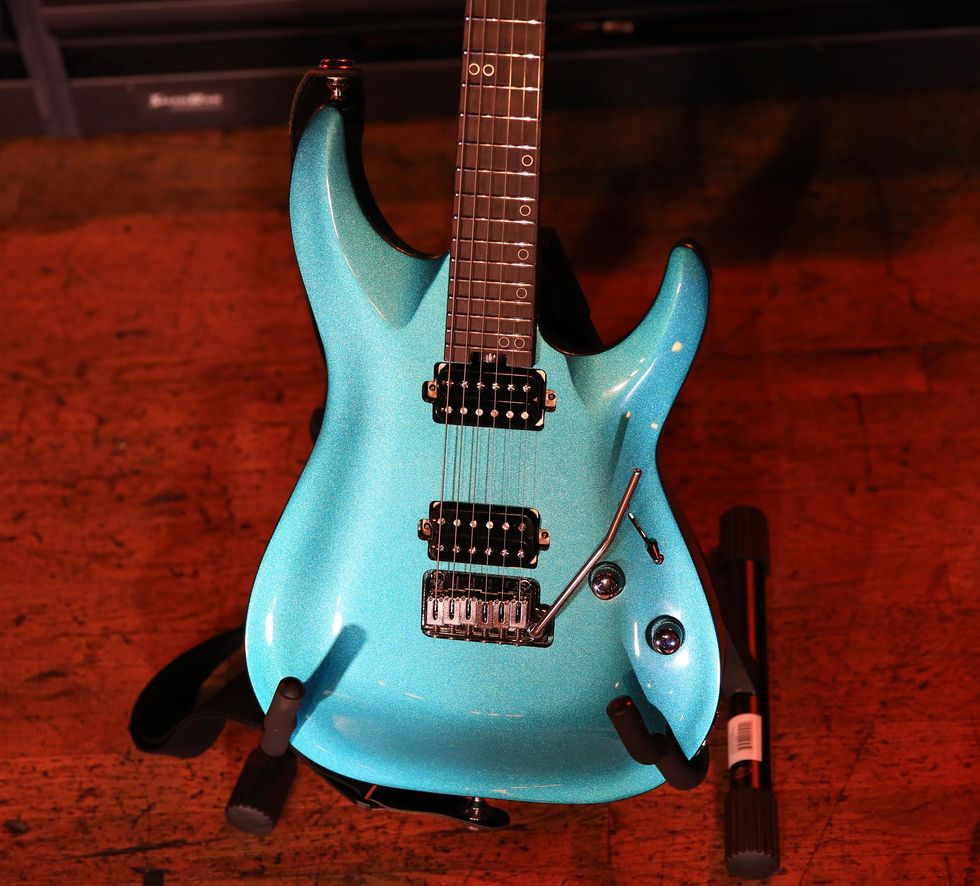
Our first Rig Rundown of 2020 also featured Aaron Marshall. In that episode, he showed off a batch of gorgeous prototypes from Poland’s high-end guitar maker Mayones. The relationship eventually presented two issues for Marshall: the limited quantities produced by this handmade shop and the top-tier price tags that would make them a rare commodity for most of his fans. What he really wanted was a way to encourage more novices to pick up the instrument.
“Everything is completely amicable with Mayones—I love those dudes—but a very quality opportunity with Schecter presented itself where I’ll get influence over models that will be actually obtainable for a reasonable price point,” adds Marshall.
He toured the States in late 2021 with four Schecter signature protypes (a pair of 6-strings and 7-strings). First, his new guitar starts with Schecter’s “super-strat” C-1 platform. The DNA of these testers include a basswood body, quartersawn wenge neck (with carbon-fiber reinforcement and a truss-rod wheel), and ebony fretboard (lighted up with Luminlays side dots for dark stages). He admits to focusing a healthy amount of its development on the neck profile because he believes that “the neck dictates the user experience” and wenge was selected because “it has an heirloom-esque feel that gives you a really nice handshake with some character.” It has a real-deal Japanese Gotoh 510 Series trem (with a steel block), extra-jumbo stainless-steel frets, and is decked out with Hipshot hardware. For this run, he was auditioning Schecter’s Custom Shop Pasadena Plus pickups, but noted that those could change before production starts. (Also, he hints at a future U.S.-made model that would come with Bare Knuckle pickups.) Marshall still puts D’Addario NYXL strings (.009–.046, and .009–.064 for 7-string) on all his guitars.
Head Turner
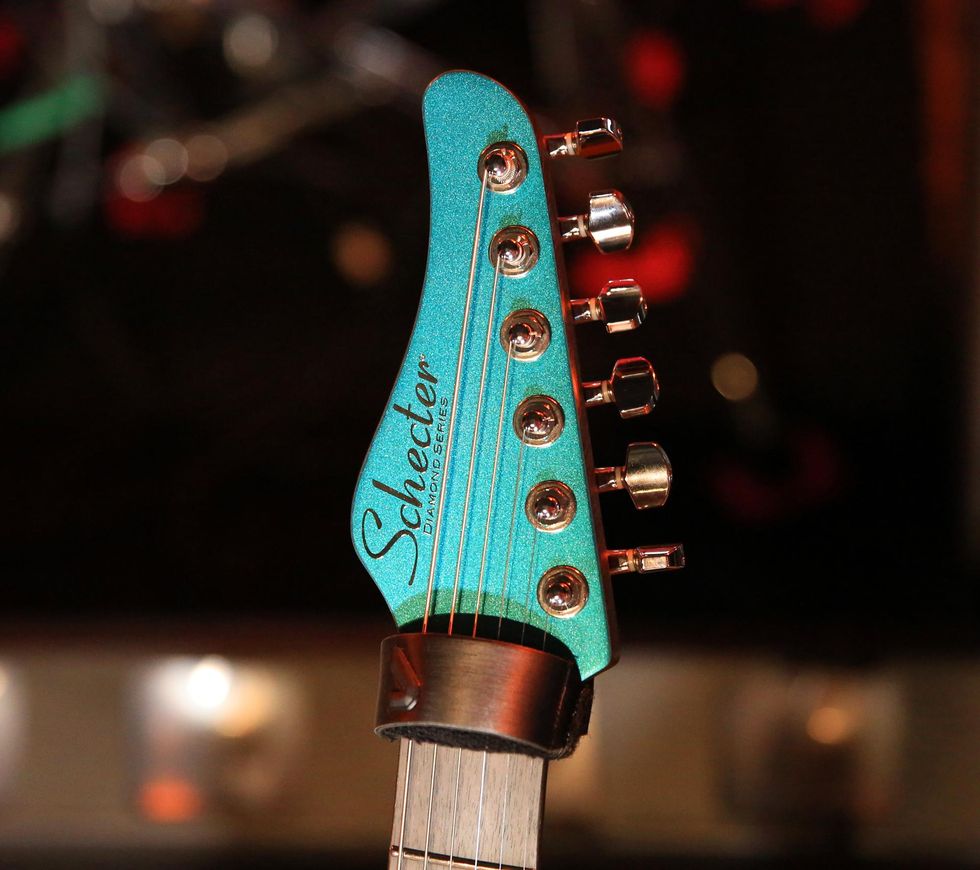
Marshall wanted something new and something old when codesigning the headstock. So, he took Schecter’s classic, 6-in-line silhouette and reversed it (a first for the company). It also has a more severe tilt-back break than standard Schecters, removing the need for a string tree.
Secret Signature
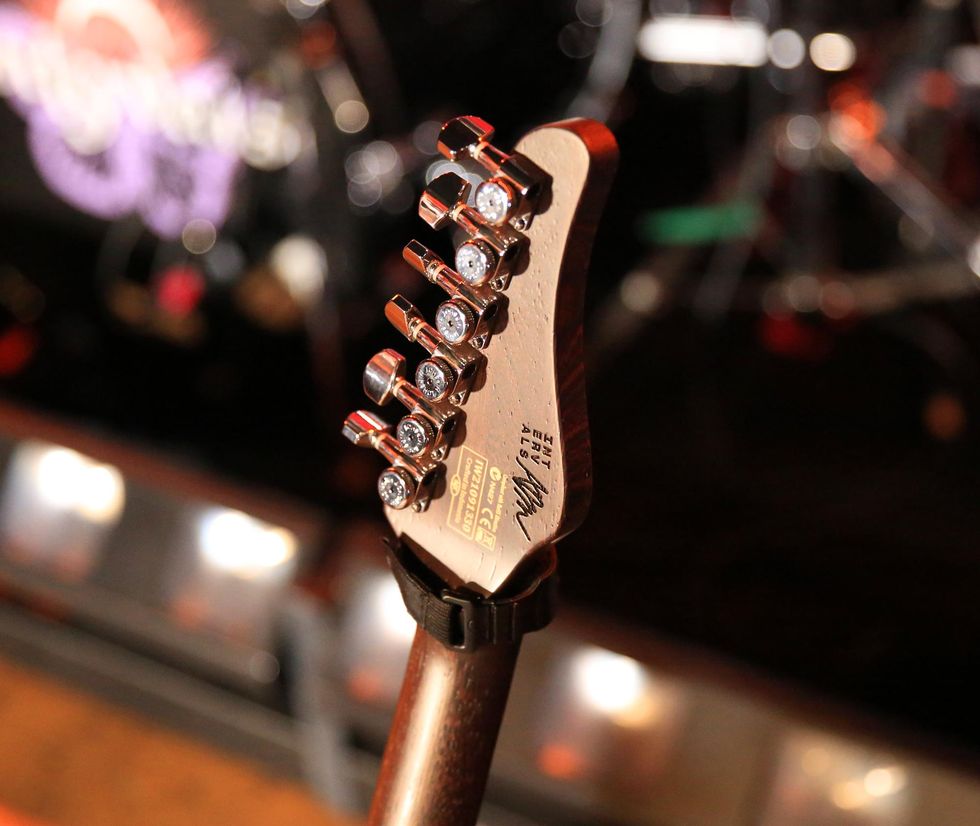
The lone serial number and signature marking on the instrument is reserved for a subtle spot on the back of the headstock.
Shred Neck
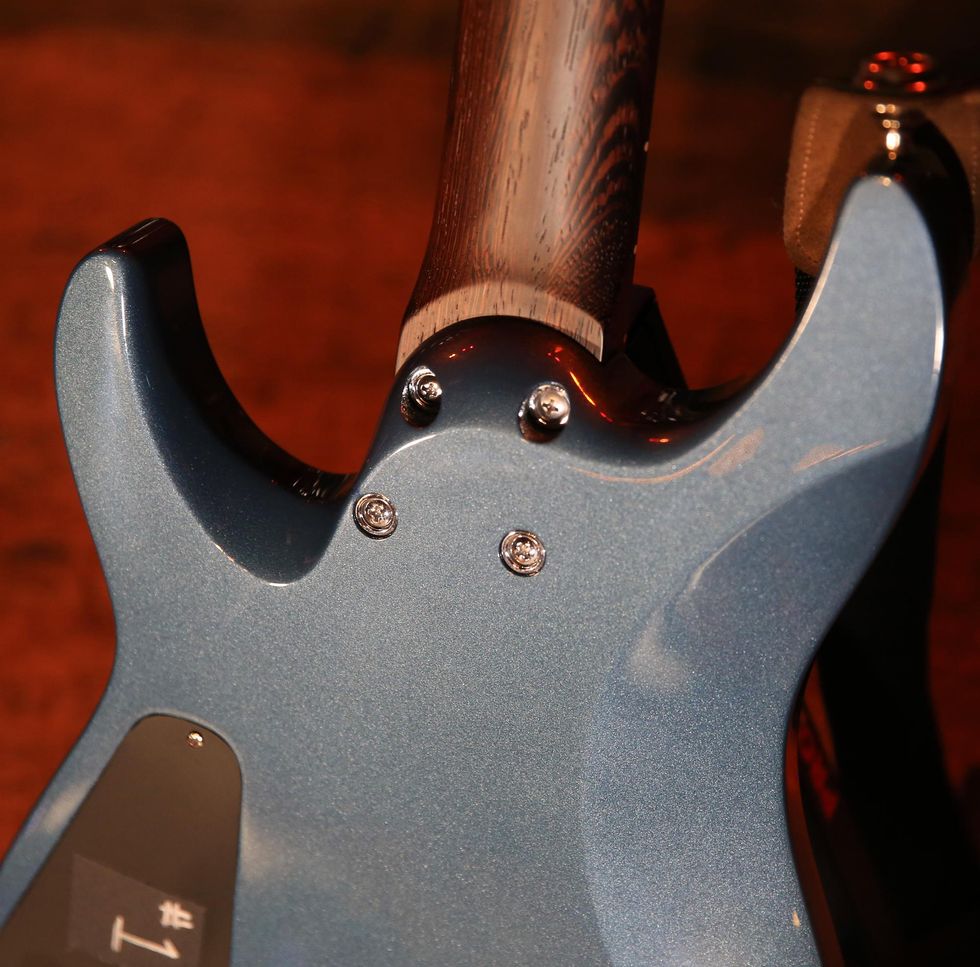
Marshall has always preferred a bolt-on neck, and things are shored up with a 4-screw connection. This curvy layout gives full access to all 24 frets.
The Whole Enchilada
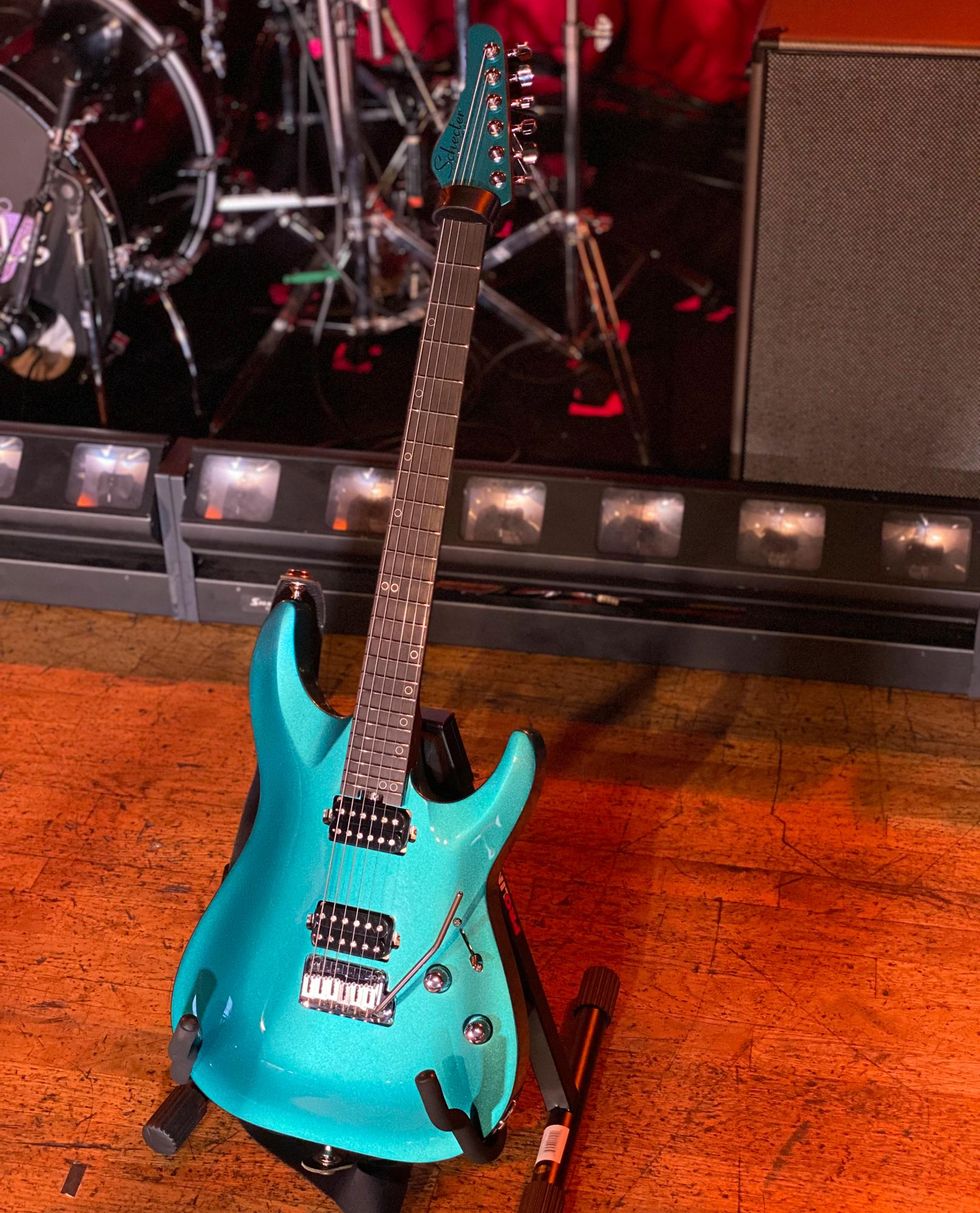
Here’s the No. 1 prototype from boot to bonnet.
Another String, Another Inch
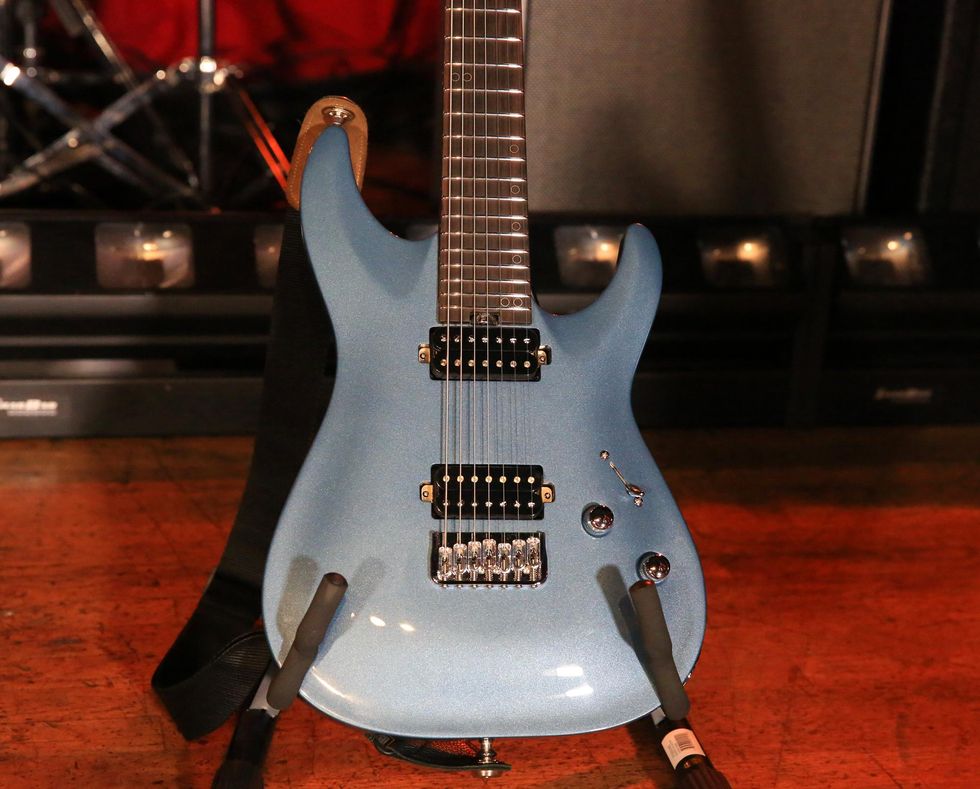
Schecter and Marshall are also testing a 7-string model. Everything is the same as the 6-string, but this instrument has a 26.5" scale length to help with string tension.
Smaller Footprint, Bigger Tones
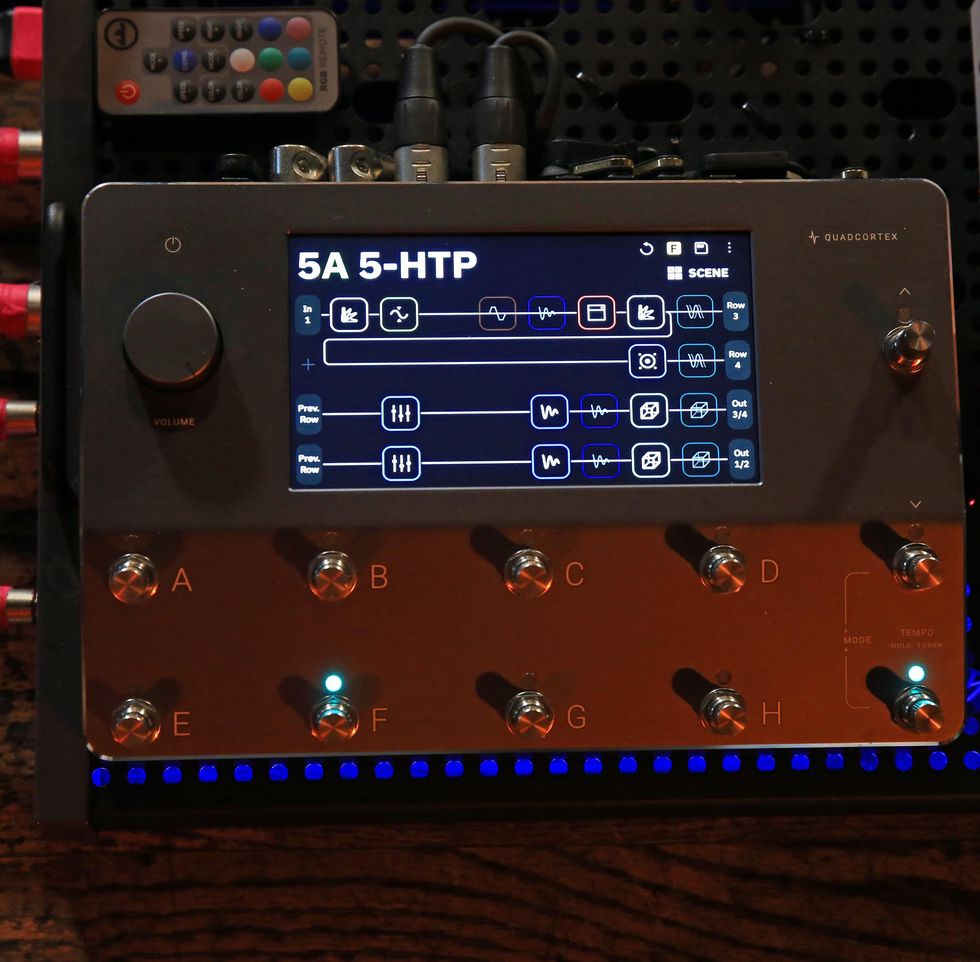
“People can get confused when they see changes in this type of stuff and think ‘Oh, this must be better’” comments Marshall. “Everything is sick in 2021. It’s all good.” Last time we checked in with Marshall and Intervals, he was running a Fractal Audio Axe-Fx III. But as you see here, another transformation happened when he swapped out the rackmount unit out for the smaller, pedalboard-ready Neural DSP Quad Cortex. (Again, no bad blood between Aaron and Fractal. He still loves their gear, too.) And the ethos behind this rig is the same in as the past, where impulse-response-based tones are feeding the front of house PA and a Seymour Duncan PowerStage 700 compact head is pumping the onstage cabs.
Within the Quad Cortex, Marshall created three specific impulse responses with different frequencies for rhythm, lead, and split-coil sounds. The amps he uses within the unit include a Friedman (“hot sounds”), JCM800 (“clangy twangy sounds”), Bogner Shiva (“clean sounds that need a little spring and bounce”), and a Roland JC-120 Jazz Chorus (“stylized ’80s cleans”).
More than Meets the Eye
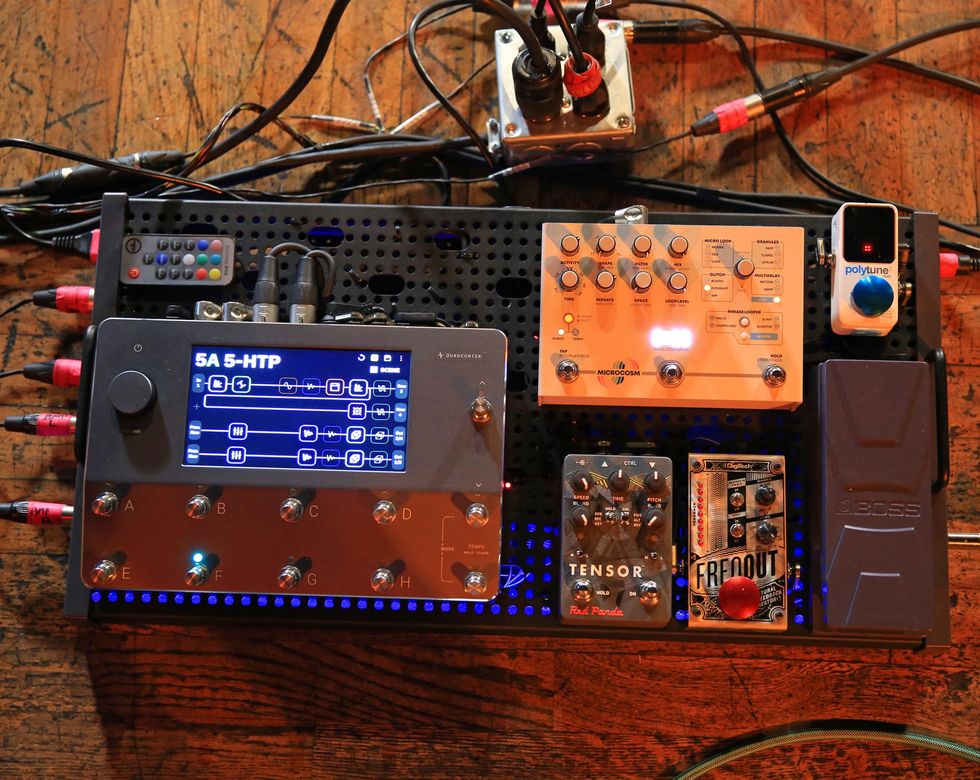
This is it—everything that Marshall uses to power up for an Intervals live show. Alongside the Neural DSP Quad Cortex, he employs a Hologram Electronics Microcosm for stutter/glitch effects, a Red Panda Tensor for laser sounds, and the DigiTech FreqOut for instant feedback. A Boss EV-30 Dual Expression pedal helps handle the filter on the Microcosm and dial in dynamics for the Quad Cortex. A TC Electronic PolyTune 3 Mini keeps his Schecters in check. And everything is housed on a custom Temple Audio DUO Series Templeboard.
Revv Rock
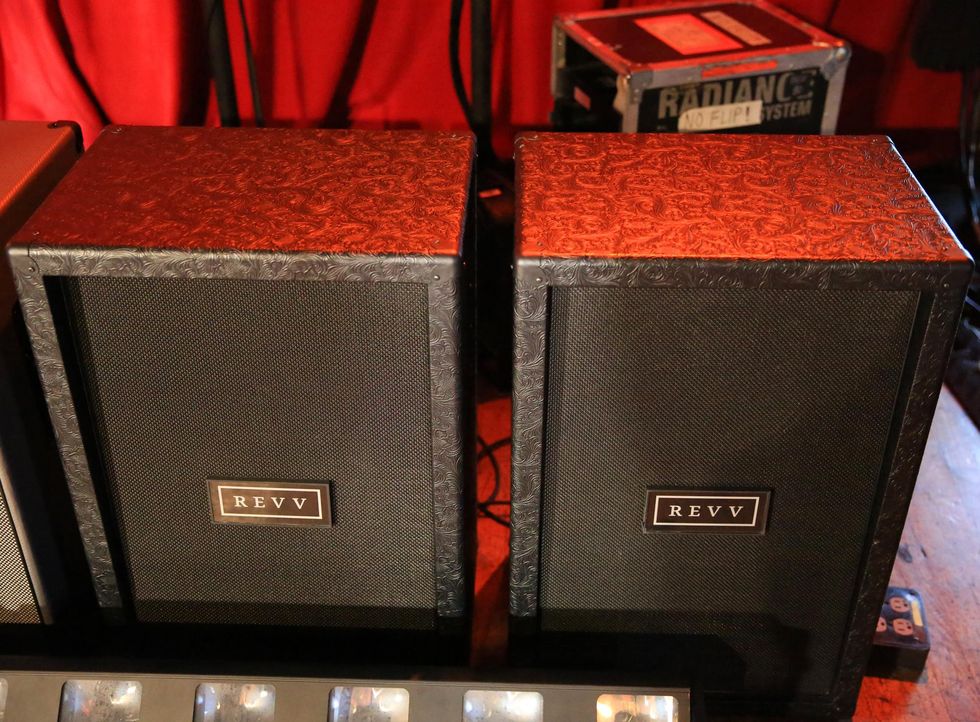
Another evolution is the stereo cabinets onstage, which providing a completely symmetrical sound. Both Aaron Marshall and guitarist Travis LeVrier each have a pair of custom vertical Revv 2x12s (with exquisite paisley tooling) that have a couple of Celestions: a Vintage 30 (bottom) and a G12M 65 Creamback (top).
![Rig Rundown: Intervals’ Aaron Marshall [2022]](https://www.premierguitar.com/media-library/rig-rundown-intervals-2022.jpg?id=29216049&width=1200&height=675)



![Devon Eisenbarger [Katy Perry] Rig Rundown](https://www.premierguitar.com/media-library/youtube.jpg?id=61774583&width=1245&height=700&quality=70&coordinates=0%2C0%2C0%2C0)
























































